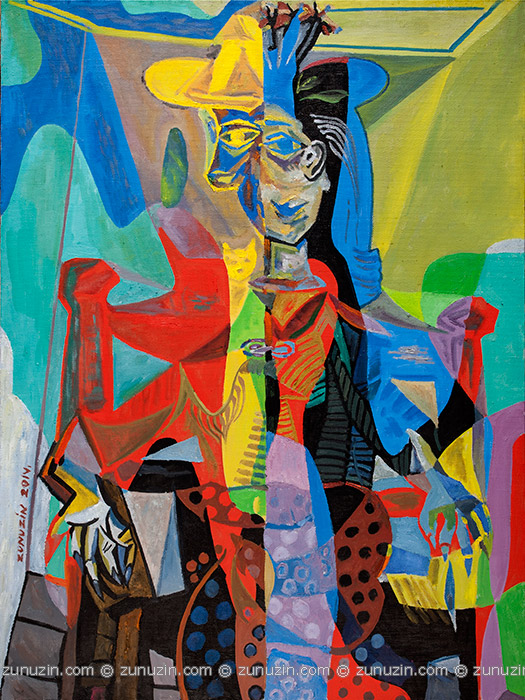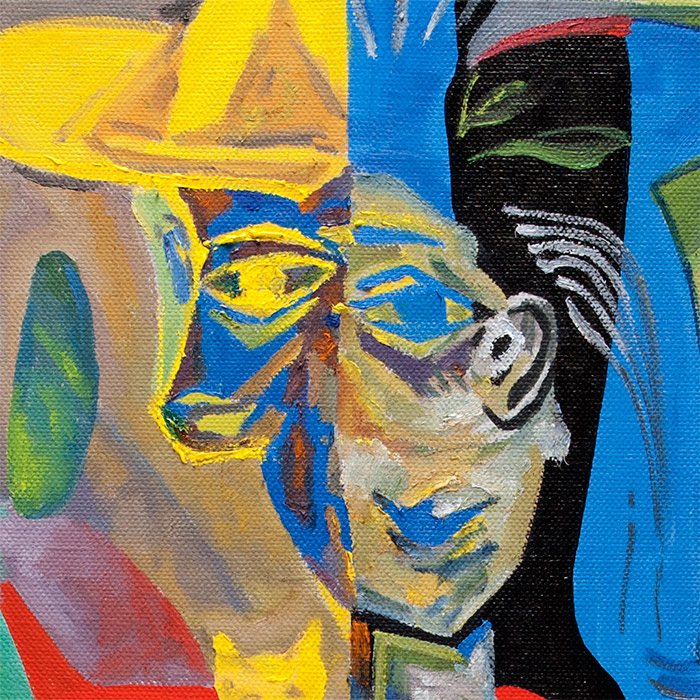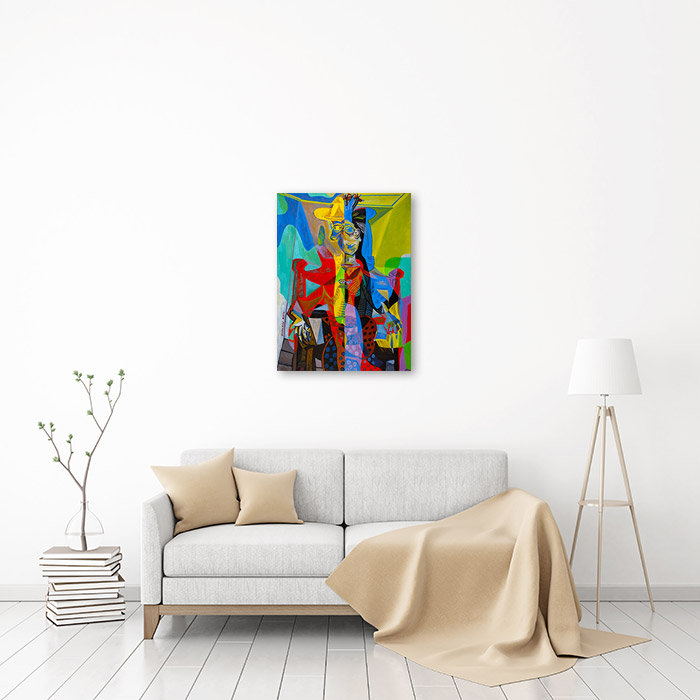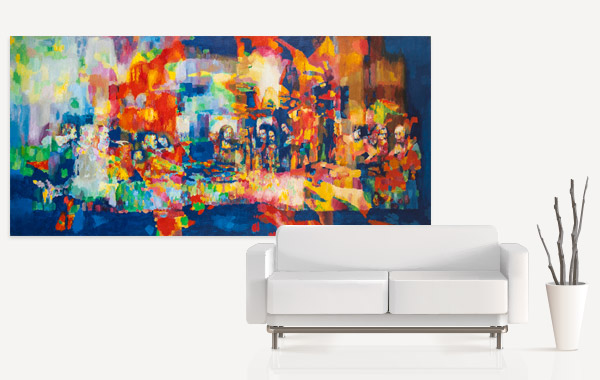Dora Maar with Cat (Reflections on works by Pablo Picasso)
Print information
- Artwork printed by EPSON Stylus Pro 7880 (Epson Ultra Chrome K3 Vivid Magenta) on canvas.
- Limited edition prints of 100. Each artwork will be individually printed, signed, dated and numbered by the artist Vladimir Zunuzin.
Payment and delivery
- Payments by Paypal or 2Checkout.
- Free worldwide shipping with tracking. Will usually ship within 3-5 business days.
- Year created: 2014
- Medium: oil on canvas
- Dimensions (cm): 120x90
Dora Maar with Cat (Reflections on works by Pablo Picasso) captures a figure assembled from bold, fractured planes of color that vibrate with energy. The subject sits in a throne-like chair, her presence both regal and enigmatic. The angular lines and overlapping shapes create a sense of movement, as though her image shifts and reforms before the viewer’s eyes.
The artist employs a kaleidoscope of hues—reds, blues, yellows, and greens—layered with striking contrasts. These tones emphasize the duality of the subject, at once playful and solemn. Her face, split between shadow and light, hints at both intimacy and distance, embodying the complexity of Picasso’s muse.
This reinterpretation balances homage with invention. While rooted in Cubist tradition, it embraces a contemporary vibrancy, breathing new life into a timeless figure. The composition invites viewers to contemplate not only the woman herself but also the act of seeing—fragmented, layered, and endlessly open to interpretation.








